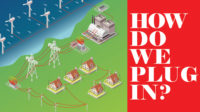
Russia’s nuclear power program is making aggressive moves, taking big financial risks to become the world’s leading nuclear powerplant builder. In recent months, the state-owned nuclear power company Rosatom says it has doubled its orders for new plants since the disaster in Fukushima. It is lending Hungary EU 10 billion to construct a new reactor at an existing Hungarian facility in Paks. Local reports say the finance ministry aims to use Russia’s welfare fund to take a 34% ownership stake in a project Rosatom was awarded in Finland.
In the closing of its recent 2400 MW deal with Hungary, Rosatom edged out France’s Areva and the U.S. nuclear specialist Westinghouse partly because of the Russians' vertically integrated-project-delivery method that allows it to provide engineering-procurement-construction (EPC) services along with fuel supply, waste disposal and financing—which combined account for 80% of the Hungary project’s cost. ENR sources say a lull in nuclear building activity in the United States has led to the atrophy of certain construction skills required to build nuclear power plants. The U.S., no longer able to guarantee nuclear concrete code compliance and fabrication of heavy steel components, is at a disadvatage competing gobally for new nuclear construction, observers say.
Financial prowess will also be crucial as construction and engineering firms compete to build new nuclear power capacity, especially in cash-strapped developing countries where demand for electricity is high. In fact, U.S. builders might have to invest to compete, says the Nuclear Energy Institute, Washington, D.C. “We are supporting the re-certification of nuclear projects with the U.S. Import-Export Bank so that U.S. nuclear power builders have the financial backing to win projects abroad,” says Carol Berrigan, spokesperson for NEI.
Rosatom says it holds contracts to build 20 nuclear power blocks abroad and is examining another 40 proposals with foreign partners. The company says it hopes half of these will result in contracts. In addition to the Hungarian deal, Atomstroyexport, the company’s international construction subsidiary, says projects are currently under construction or development in Turkey, Taiwan, Belarus and Finland.
The nuclear power market has recovered from the backlash of Japan’s horrific nuclear power accident at Fukushima, NEI says. There are 71 new nuclear power stations under construction worldwide, including five in the United States (two each at V.C. Summer in South Carolina and Vogtle in Georgia and one at the Tennessee Valley Authority's Watts Bar plant). An additional 172 are in the licensing and advanced planning stages and virtually all of these plants will be built abroad because of new electricity demand—mostly in developing countries. “We have seen public support for nuclear energy return to levels they were at before Fukushima,’’ Berrigan says. There’s $500 billion to $750 billon worth of work up for grabs outside the U.S. over the next 10 years, NEI says.
The now notorious Fukushima disaster slowed the nuclear power market, but—echoing NEI’s statements—Rosatom says the market has returned to rapid expansion and acceptance of its product. This is despite the fact that the only nuclear accident in history worse than Fukushima is Russia’s own Chernobyl disaster. The 1986 event killed 31 people and radioactive contaminants reportedly infected thousands more people in the area.
But Rosatom says that it’s exactly because of Chernobyl that it has become the world’s most skilled, agile and experienced at delivering safe nuclear power plants. Most notably the development of a "core-catcher"—a steel vessel, water-cooled, built directly under a reactor to catch the molten reactor core in case of a meltdown—has been incorporated into the design of new reactors.
“The VVER reactor, which is a Russian version of the pressurized water reactors we use here in the United States, is a good design,” says Alan Hanson, a former nuclear project manager for Areva and now head of the Massachusetts Institute of Technology’s International Nuclear Leadership Education Program. “But I don’t know if the lessons from Chernobyl translate into good construction and operational practices.”
Russia has no independent nuclear regulatory agency like other developed countries, and its plans to dispose of nuclear waste underground near the Baltic Sea are vague and secretive, says the Nuclear Heritage Network, a web-based consortium of anti-nuclear activists worldwide. Further, another anti-nuclear activist group, Physicians for Social Responsibility, says that while nuclear is marketed as “clean energy”— because the actual nuclear reaction in powerplants releases little greenhouse gas emissions—uranium mining and enrichment activities to fuel the reactors and the waste they generate are major polluters.
MIT is a supporter of nuclear power. Hanson says nuclear has life-cycle carbon emissions competitive with wind energy and current storage practices that are “exceedingly” safe. There are concerns about best construction and operartional practices in Russia, but MIT is using its research and development expertise and working closely with the Russian establishment to better educate students, build a more conscientious industrial culture and help construction and engineering firms operate to Western safety standards. “They better be doing things right because they are going to be building reactors all over the world,” Hanson says.



Post a comment to this article
Report Abusive Comment